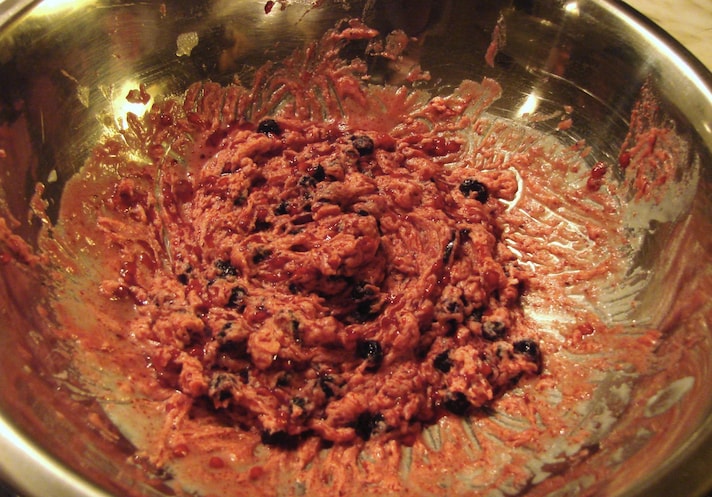
In the U.S., ice cream is an institution: hazelnut, pistachio, coffee, but also strawberry, lemon and more exotic flavors like mango or matcha. Over time, it has multiplied into a thousand variations to meet dietary needs and ethical choices: lactose-free, vegan, sugar-free or cream-free. Artisan gelato shops experiment with passion, creating unique flavors inspired by seasons, events or simply the desire to surprise.
But ice cream is not just this. Thousands of miles away, in the ice of Alaska, there is an ancient and unexpected version. It is called akutaq, also known as "Eskimo ice cream", or seal ice cream. Born to face an extreme climate, it is made of a few essential ingredients, carefully transformed into a food that guaranteed energy and resistance. But what is akutaq really, and what history does it bring with it?
A Food Born From Need
In the Yupik language, akutaq simply means to mix, a verb that perfectly describes its essence. It is made with a few basic ingredients— animal fat, meat, and wild berries —and worked by hand until it achieves a soft and creamy consistency. Far from modern desserts, without sugar, cream, or milk, akutaq was born as a concentrated source of energy, essential for facing the harsh Arctic winters, when hunting and gathering were impossible.
In an environment where every resource had a specific purpose, seal ice cream was not a luxury, but a necessity: the fats and animal proteins helped to resist the cold, while the berries – collected during the short summer – guaranteed a supply of vitamins. A simple and ingenious recipe, designed to make the most of what nature offered in an extreme territory.

Simple Ingredients and Collective Rites
In the Arctic lands, akutaq was more than just nourishment: it was a symbol of sharing and tradition. Reindeer, elk, seal or white fish meat were mixed with animal fat and berries such as cloudberries (similar to golden blackberries), Arctic blueberries and wild raspberries, rich in vitamin C and with an intense flavor. Processed for a long time to incorporate air, these ingredients created a dense but light mixture, capable of sustaining communities in the harshest months. Preparing it was a collective ritual: around the containers, hands moved tirelessly, intertwining voices, stories and knowledge passed down from generation to generation.
Akutaq was the protagonist of ceremonies, weddings and births, a tangible bond with the ancestors. Its soul remains that of an identity food, born from the resilience and ingenuity of a people. Even the purest snow had a fundamental role: a natural refrigerant in the absence of modern tools. Every gesture, from the harvesting of the berries to the long processing, told of a deep bond with the land and its seasons: a balance between survival and respect for nature.
Akutaq, When Change Meets Tradition
Over time, the ancient gesture of preparing akutaq has changed. The arrival of new ingredients has brought transformations: Crisco, a hydrogenated vegetable fat made from vegetable oils, has replaced animal fat, offering a more stable consistency and easier preparation. The flavor has been sweetened with sugar and potatoes. Modern versions, sweeter and softer, have taken hold, conquering even those who are strangers to tradition.
Yet, beyond the variations, Akutaq remains a food full of memories. Today, despite new variations, Akutaq retains its symbolic value: a food that tells of the deep bond with an environment as generous as it is implacable.
Akutaq Today: Identity and New Visions
Today, more than ever, Akutaq is a bridge between the past and the future. New indigenous generations are rediscovering it with pride, aware of the cultural value it holds. Some native chefs are reinterpreting it in a contemporary way, combining respect for tradition and modern sensibility, and telling stories of resistance and belonging through food.

In some reinterpretations, alongside traditional ingredients, creative touches such as wild honey, fermented roots or arctic spices appear. Experiments that do not betray the essence of the dish, but enrich it and keep alive the connection with the origins.
Akutaq is a lesson in essentiality: few ingredients, slow gestures, deep attention. In an age of abundance and speed, it teaches us that value does not lie in excess, but in care and the ability to make the most of the minimum.
;Resize,width=767;)
